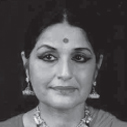In autumn, when the monsoon rains have finally ceased and the nights are cool and crisp, North India celebrates Dussehra, the great festival of Ram. In villages, towns, and cities over a period of ten to thirty consecutive nights, episodes from the play – the Ram Leela – are enacted. Among all the traditional theatre genres of India, the Ram Leela comes closest to being a national drama, for it is performed over larger parts of the country than any other single form.
The pan-Indian popularity of Ram Leela
During this great festival, there are probably few residents who are not within walking distance of a Ram Leela performance. Nearly every village and town has a place for large public gatherings, and this is commonly known as the Ram Leela grounds, for the Ram Leela is the occasion for the largest and most important assembly held in the locality. It is a national drama also because it has been the vehicle for promoting the story of Ram and Sita, whose images have powerfully moulded the Indian ideals of manhood and womanhood, and whose mythical rule has come to exemplify the ideal Indian state.
Through the Ram Leela, a mass education takes place which annually renews in the collective Hindu mind, a notion of the integrity of Hindu society and a vision of what the national life might be. The effectiveness of the Ram Leela rests partially upon the fact that it is folk theatre – theatre done by, for and through the support of the people of the local communities where they are performed. For that reason, the style, length, and organisational support vary according to local traditions. The Ram Leela, true to its origin as a community creation, is played on the fairgrounds and in the market place. It belongs to all of the people and is enacted where the entire community may gather. The players enact Ram’s well-known episodes before large and frequently noisy crowds, and sometimes they must compete with the cries of vendors hawking their wares. The Ram Leela therefore conveys the impression of a folk theatre in a religious guise.
The provenance
In Varanasi there is an established belief that Megha Bhagat, a disciple of Tulsidas, first started the Ram Leela at Assi by staging the Ramcharitmanas of his master around the year 1625. Although there is no documentary evidence at present to support this claim, it seems quite creditable, for fragments of evidence suggest that a Ram Leela type of drama existed before Tulsidas wrote his great work. In the Ramcharitmanas itself, there is a reference which suggests that Tulsidas in his childhood was familiar with performances like the Ram Leela. Also, the biography of Chaitanya, the great Bengali religious leader records an incident during his autumn stay in the city of Puri, in which scenes from the epic of Ram were acted out. Chaitanya’s death and his biography both preceded Tulsidas’s writing of his epic. Finally, a Ramakrida is listed among the minor forms of drama which suggested an early form of theatre dealing with the acts of Ram.
A ten day, all-male theatre
The Ram Leela, part of the autumnal Dussehra festival in most places, lasts for a period of ten days. Although from region to region it is celebrated in different ways, the Dussehra festival is interpreted everywhere to symbolise the triumph of good over evil. Dussehra means the worship of Ram and the reenactment of his heroic deeds. Here the ten-day cycle is devoted to episodes from the Ramcharitmanas. The choice of episodes is left to the organising committees. The tenth day, however, is universally celebrated as the day of victory, and the defeat of Ravan is depicted both in stage plays and processional pageantry.
The actors playing Ram, Sita and Ram’s brothers are costumed and made up in a ritual which ends with their crowning. They are then accepted by the spectators as embodiments of deities. The actor lies on the floor while one or more specialists stencil designs on his face and apply makeup. The basic coat of makeup is derived from a soft stone which, when moistened and rubbed, produces a pinkish-white lotion like makeup. The designs which are then stenciled on the face are abstract.
The entire act of costuming and makeup takes about one hour. The final act in the process is the investing of the boys with the crowns of the Ram Leela and the bows which are the distinctive symbols of Ram and Laksman. Now as divine embodiments they are carried on the shoulders of their costumers and makeup artists through the crowds that have been waiting outside the temple enclosure for a darshan, a glimpse of the deity, and are placed in the conveyance which will take them to the Leela grounds.
The actors in the Ram Leela are all amateurs, though some roles, such as Hanuman, may be played by the same actor year after year. Those who play the five principal roles or svarupas (the divine embodiments of Ram, Sita, Laksman, Bharat, and Shatrughna), however, are young boys, usually below the age of fourteen. They may play these roles for three or four years but yield when the onset of puberty is signaled by the sprouting of a moustache. With some scattered exceptions, the svarupa roles are always played by boys from respectable Brahmin families.
The all-male cast is trained to speak clearly and audibly, and they do so in a declamatory style which is matched by broad, dramatic gestures. The acting generally is unpolished, but some stylisation is usually apparent in dueling
scenes; here the action is smoother, closely approaching dance.


